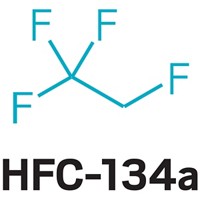Advertisement
Grab your lab coat. Let's get started
Welcome!
Welcome!
Create an account below to get 6 C&EN articles per month, receive newsletters and more - all free.
It seems this is your first time logging in online. Please enter the following information to continue.
As an ACS member you automatically get access to this site. All we need is few more details to create your reading experience.
Not you? Sign in with a different account.
Not you? Sign in with a different account.
ERROR 1
ERROR 1
ERROR 2
ERROR 2
ERROR 2
ERROR 2
ERROR 2
Password and Confirm password must match.
If you have an ACS member number, please enter it here so we can link this account to your membership. (optional)
ERROR 2
ACS values your privacy. By submitting your information, you are gaining access to C&EN and subscribing to our weekly newsletter. We use the information you provide to make your reading experience better, and we will never sell your data to third party members.
Environment
Paris Agreement to curb climate change took off
Countries also clinched deal to limit hydrofluorocarbon use
by Cheryl Hogue
December 14, 2016
| A version of this story appeared in
Volume 94, Issue 49
This year saw the official launch of the first international climate change accord that calls for greenhouse gas emission controls by nearly the entire world.
That deal, the Paris Agreement, was completed in December 2015 in the French capital. This April, the accord set a record among UN pacts for having the most countries—175—sign it on the first day they could. The agreement formally took effect in early November.
But negotiations in November focused on global implementation of the Paris deal were shaken by the election of Donald Trump as U.S. President. Trump said during the campaign that he would “cancel” the Paris accord and has tapped an opponent of greenhouse gas controls as head of EPA.
In other climate action, countries this year turned to the chemical industry to lead the world away from the use of a class of potent greenhouse gases: hydrofluorocarbon (HFC) refrigerants. Under the Montreal Protocol on Substances That Deplete the Ozone Layer, negotiators in October finished a legally binding pact that calls for nations to limit the amount of HFCs they use within 12 years. Though HFCs don’t harm stratospheric ozone, they were introduced as substitutes for chemicals that erode the ozone layer and therefore fall under the purview of the Montreal protocol rather than the Paris Agreement.
Chemical makers, who back the new HFC treaty, are introducing more climate-friendly substitutes, notably hydrofluoroolefins. Some environmental activists, though, are pushing for greater use of ammonia and carbon dioxide as refrigerants.
C&EN's YEAR IN REVIEW
Top Headlines of 2016
- Hawaii explosion cost a researcher an arm
- TSCA reform crossed the finish line
- U.S. elected Trump as president
- The periodic table got four new elements
- Post Dow-DuPont, chemical deal-making waned as 2016 advanced
- Labs made advances in Zika research
- Four ag giants to rule them all
- 2016 Nobel Prize in Chemistry at a glance
- Brexit bomb exploded
- Focus returned to Iran's chemical industry
- Overtime pay limit doubles under Obama administration
- The CRISPR craze continued
- Perfluorinated compounds got increased scrutiny
- From the lab to the market
- Paris Agreement to curb climate change took off
- World chemical production at a glance
- Flint's water woes lingered
- As China's economy slowed, chemical makers adjusted
- Mostafa A. El-Sayed won the 2016 Priestley Medal
- ACS members on average fared better than young graduates in employment surveys
- ACS invests internationally
- Spun-off firms found their footing in 2016
- Remembering the Nobel laureates we lost in 2016
- ACS proposed chemistry preprint server
- Berkeley College of Chemistry avoided reorganization
- Fight against opioid epidemic continued in 2016
- Noble gas shortages averted, for now
- The shale gas boom by the numbers
- Crop protection products in the crosshairs
- ACS launched new journals
- Website search terms of the year
- Biobased materials hit the big time
- No better deal emerged for Mossville, La.
- U.S. prepares for national food labeling standard
Top Research of 2016
- Mini factory made drugs on demand
- World's first PET-munching microbe discovered
- Liquid metals went to work
- Methylene activation reached new heights
- Biological structures of the year
- Wearable sensors were 'the' fashion accessories of 2016
- Scientists beefed up the antibiotic arsenal
- An enzymatic route to carbon-silicon bonds
- Single-atom catalysts gained a toehold
Revisiting Research of 2006




Join the conversation
Contact the reporter
Submit a Letter to the Editor for publication
Engage with us on Twitter